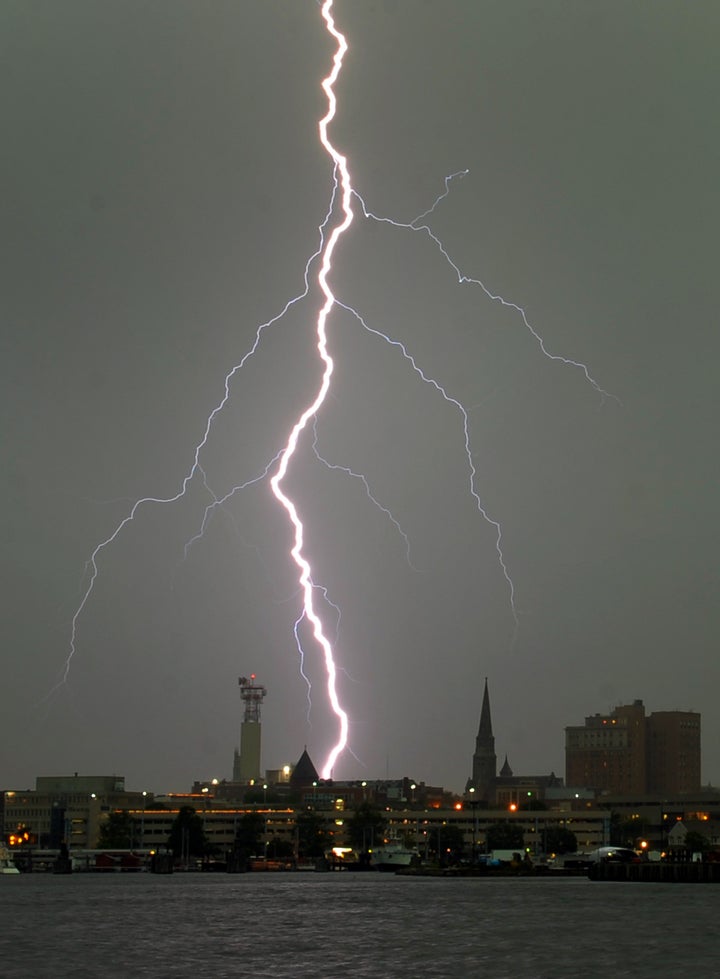
Blazing. Lightning fast. Turbo charged.
Those are some of the ways Verizon, AT&T, T-Mobile and Sprint are describing 4G, as they push hard for smartphone users to convert to their new, upgraded networks.
But 4G won't fix dropped calls, or a myriad of other service problems that exist, though it could lead to new issues for users moving through areas that lack coverage. And experts warn faster wireless could lead to increased data consumption, meaning potentially bigger bills.
4G is the shorthand for fourth-generation wireless (3G is third-generation), though the version of 4G currently available in the United States could be more accurately be described as advanced 3G. A 4G network can be up to 10 times faster than 3G, letting consumers browse the web, download songs and stream movies more quickly -- and potentially -- more often. U.S. wireless companies also promise that building out their 4G networks will help bring broadband access to those rural areas that currently lack reliable high-speed Internet.
“As bandwidth increases, the content delivered will be richer and more diversified in terms of the type of content, providing incentive to use more services and consequently more bandwidth,” said Harry Wang of Parks Associates, a tech research and consulting firm. “We have seen that in each iteration of an upgrade on the network -- the data offered now is not going to be adequate, for sure.”
Tablet users, a growing population, may be especially vulnerable to burning bandwidth quickly. Though the smartphone’s small screen may put some users off from watching movies, tablets -- which run on the same network as phones -- are geared towards media consumption and may encourage people to download more content.
Already, reports show that people are consuming more data as smartphone use grows more widespread. While AT&T has stated that only the heaviest of its users top 2 GB per month (its upper limit on data usage), it also observed that data volumes on its mobile broadband network have increased by 8,000 percent over the last four years. One gigabyte of use is equal to about 35 hours of streaming music or 5 hours of streaming movies. By 2015, the network will handle the same amount of data traffic between Jan. 1 and Feb. 15 that it did in all of 2010, according to AT&T.
Using AT&T’s own data calculator reveals just how easily 2 GB can be used up within a month by users who enjoy accessing media, in addition to browsing the web and sending emails. Let's say a smartphone user listens to about an hour of music and watches about 20 minutes of video each day: That meets the 2 GB limit. Downloading music, movies, apps or books would use even more data.
For consumers, under the existing plans, more data usage can mean higher bills -- especially for those who exceed their cap. While AT&T and other providers, like Verizon, have not yet confirmed what changes might be made to the usage-based pricing plans that exist for mobile data, both companies have already instituted data caps on use per month. AT&T charges users $10 for each GB over the limit. Verizon has implemented data throttling, slowing speeds during peak hours and in crowded locations.
“If you're buying a higher speed-based program, you'll run into the cap quicker,” said Art Brodsky, of Public Knowledge. “They show all the wiz bang possible stuff on fast networks without talking about the back end -- if you use this network too much we're going to charge you.”
While Verizon currently offers unlimited data for 4G LTE plans for $29.99 a month, AT&T has already moved over to a tiered pricing system that charges customers $25 for 2 GB each month, and $10 for each GB over the limit. Verizon has stated that it too will move over to a tiered system by as soon as this summer.
And even with higher speeds, 4G networks won't fix pre-existing network problems with dropped calls, coverage gaps and slow speeds at peak times. Some experts expressed worries that 4G networks will end up overwhelmed in the same way 3G networks were when AT&T first introduced the iPhone to its networks.
Additionally, users that shell out extra for 4G speeds won’t actually be able to use the service everywhere because not every city is currently covered by 4G. AT&T covers five cities, with 15 more expected by the end of the year. Verizon's 4G network is in 39 cities, with plans to reach 140 by the end of 2011. T-Mobile is in close to 100 cities right now.
But for customers on the new 4G networks, straying outside the covered zones could be a serious headache. Verizon has stated it does not plan to let calls placed on its 4G network to roam on its 3G network, which could lead to dropped calls for users moving out of 4G coverage zones.
And in terms of general access, people have already noted that switching between the two networks creates a considerable lag as the phone reconnects. While Verizon has said switching to 3G from 4G is automatic, switching back is not, so that the phone may toggle irritatingly back and forth as it tries to connect, draining battery in the process.
Even though carriers are already praising the benefits of 4G, experts say that by 2015, only about five percent of mobile Internet users will be on the higher-speed network. The future of the wireless web may be fast, but it's not speeding to get there.